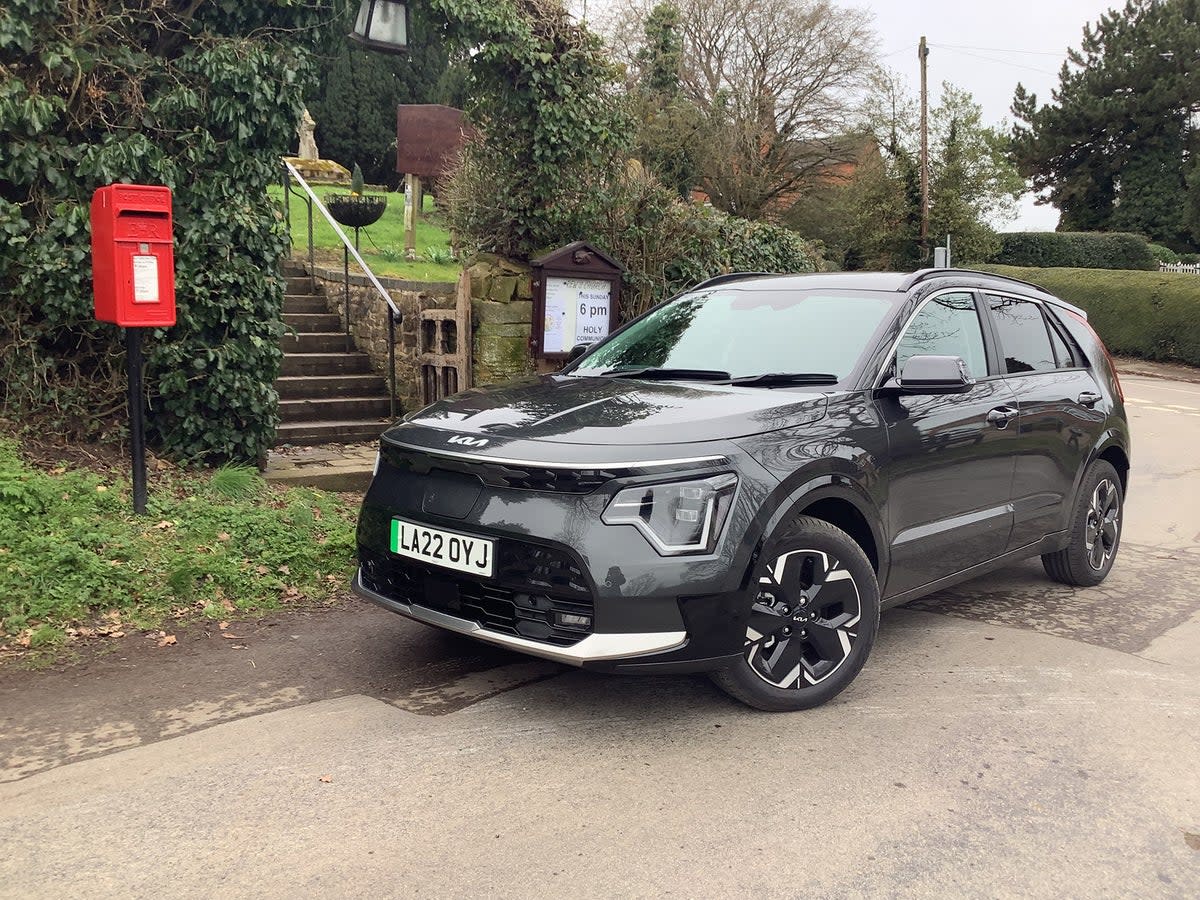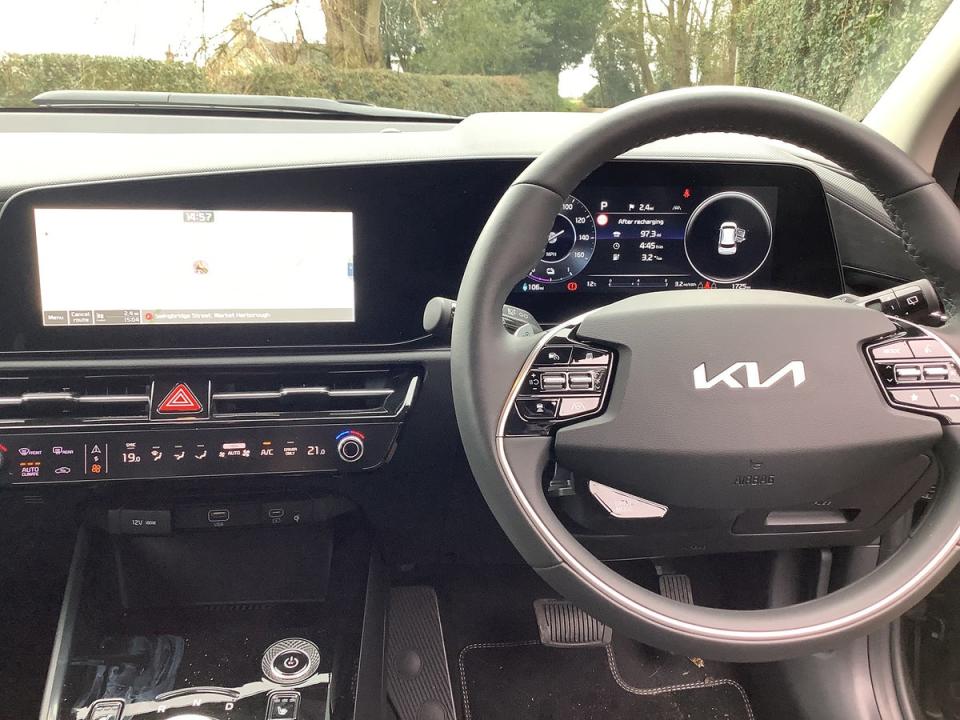Kia Niro EV: A good upgrade on an already great model

Though mostly a bluffer, sometimes people ask me about cars and which one they “should” buy. It’s a question that is probably unanswerable, but I always like to try and help. After a few cursory queries about their circumstances, and ruling out the Bugatti Veyron, it’d usually come down to a few options. People who wanted a small car, and/or had mobility issues, were told to buy a Honda Jazz. For those who wanted something a bit larger, and liked a value buy, I advised them to look at a Skoda Octavia (I bought one myself, and still have it).
If they wanted to be a relatively new adopter of a battery electric vehicle, ie pure electric car, the default answer was Kia e-Niro. A convincingly electrified version of their mid-sized “crossover” model, part-hatchback, part-compact SUV, the e-Niro had the best real-world range this side of a Tesla, and would probably beat the Tesla for reliability, practicality, reliability and, of course, affordability.
It was the first model, with its Hyundai Kona sibling, that showed the South Korean makes had not only caught up with America, Europe and Japan but overtaken them technologically. (And they are just about keeping up with the emerging Chinese brands). Even four years ago, there was simply no Peugeot, Ford or VW group equivalent, for example, to an e-Niro.

So the Kia e-Niro was a great success, and now, a hard act to follow, we have the Kia Niro EV. The good news is that the Niro EV is an even better car than its predecessor.
Let’s take the look, for a start. The old e-Niro, not that it matters that much now, was pleasantly styled but not all that memorable or stylish. This time round they’ve spiced the old nourish bowl up a bit. The thick pillar behind the rear doors, a little like the visible safety cell on a Smart or the blades at the back of an Audi A8, stands out, accentuating its presence and especially when finished in a contrasting shade.
Then there’s the “tiger nose” face, Kia’s current signature look for the grille and front headlights. Again very bold, all zig-zaggy and, in this EV version of the Niro, blanked off, with a little hatch at the centre for easier charging (because you never know which side of the car will be nearest a commercial charging point).
It’s a little bigger than the older car and seems a bit bigger inside but there’s not much in it. Also though the batteries are stored under the floor, you still lose some boot space, compared with the petrol-electric hybrid versions of the Niro (with plug-in option). You still get more than 1,300 litres of space with the rear seats down, however. As a small recompense, the Kia Niro EV features a “frunk” (front trunk or boot) where you can stash the charging cables.
THE SPEC
Kia Niro EV
Price: £40,445 (as tested, base model at £36,795, hybrid from £28,295)
Propulsion: Single electric motor, powered by 64.8kWh battery
Power (bhp): 201
Top speed: 103mph
0-60mph: 7.8 secs
Economy: 3.9 miles per kWh
Range: 230-250 miles
CO2 emissions: 0
It looks good, and the interior is equally tasteful and stylish. The Niro comes in three trim levels – 2, 3, 4 – with 4 the plushest (eg Kardon audio system and head-up display), while 2 is fairly low-quality plastics. The 3 is the “Goldilocks” choice, with just the right mix of advanced driver assistance combined with a nicely finished cabin. In keeping with the eco theme of this planet-saving vehicle, there are some recycled materials in there, including the headlining fashioned from waste wallpaper and the “Egan leather” (great oxymoron) that’s somehow made out of eucalyptus leaves. So you have the perfect environment in which to enjoy your insect protein burger and fries: don’t knock it till you try it.
It drives well, too. It’s no one’s sports car and, the more electric cars I drive, including the ones that are explicitly “performance” versions, such as the new Skoda Enyaq VRS, the more I think that electric cars just don’t really encourage you to get lairy. Anyway, there are four driving modes to choose from – eco, sport, smart and (usefully) snow, and the paddle shifts on the steering wheel can vary the degree of regenerative or “engine” braking, though not that much in my experience. It’s got enough proper buttons to mean you just about avoid getting distracted by trying to use a touch screen. So that’s a pass, too.

But is the electric Kia Niro still my default choice? It’s getting harder. The range, at a real-world 250 miles or so (it varies greatly with speed and even the temperature outside), isn’t that much better than its predecessor, but the real issue is that, fairly suddenly, the competition has caught up. Once upon a time, the likes of the Nissan Leaf, the BMW i3 and a few electric Kia and Hyundai models had things to themselves.
Now everyone’s at it, even laggards such as Ford and Toyota, and there’s a bevvy of BEVs to choose from. There are very pretty ones, such as the Peugeot e-205. There are value ones, such as the MG 5 estate and ZS SUV. There’s the funkadelic VW ID Buzz, made up like a Sixties hippy camper. There are the stylish Cupra Born and Skoda Enyaq and Ford Mustang Mach-E, and handsome offerings from Citroen (e-C4) and Renault (Megane E-Tech). Volvo do the pricey but exquisitely finished C40. Nissan’s Ariya is gorgeous. There’s even a BEV pick-up, the Maxus T90.
They all have strengths and weaknesses, and all are in a market that’s getting tougher because of inflation in electricity costs, which makes the economics of the BEV tougher. If pushed, and in a hurry, I’d still say Niro EV. It does everything well, and nothing badly. If you can justify the £10,000 purchase price premium over an equivalent Niro petrol-electric Hybrid (a combination of conscience and your average annual mileage), then I can happily commend it.


